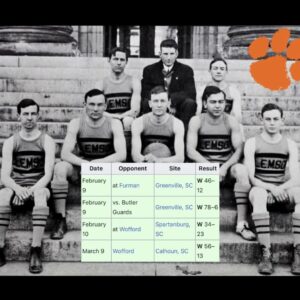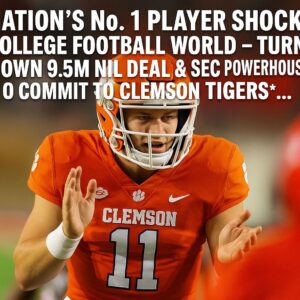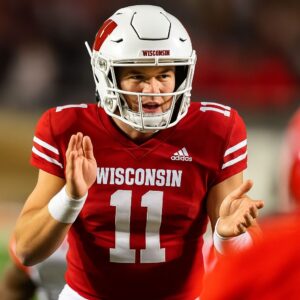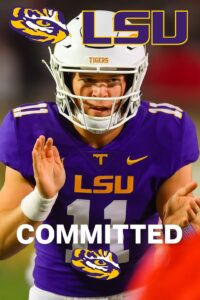Unbelievable:Kevin Young BYU men basketball head coach decommit and announce his departure Due to..
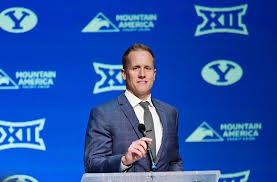
Unbelievable:Kevin Young BYU men basketball head coach decommit and announce his departure Due to..
Just a few months ago, I walked into the College Football Hall of Fame in downtown Atlanta. The entrance wall was filled with helmets, one for each NCAA football team.
The first thing you do when you walk in is fill out some information about yourself, particularly your college football fandom. The Hall of Fame gives you a lanyard that carries your information and tailors your experience to your team.
As you walk up to interactive exhibits, it can read who you are and will begin showing you information about your school. You can walk to nearly any screen and immediately learn more about Cougar legends like LaVell Edwards, Steve Young and Gordon Hudson.
As we wandered through the exhibits and examined BYU’s featured players, I noticed that none of them had played in the 21st century.
The reason I was in Atlanta was to interview Tyler Allgeier, former BYU running back and current member of the Atlanta Falcons, for a senior capstone project with some other students.
We wanted to tell the stories of former Cougars in the NFL and how BYU had made an impact on their journeys there.
Being 24 years old, I immediately thought of all the great players I had grown up watching at BYU that I felt deserved to be highlighted in these exhibits. However, as I read about the great Cougars of the past, I realized that things used to be different in Provo on the football fields.
Were all of the BYU greats before my time? No, that’s what we were in Atlanta for. Allgeier was one of the many former Cougars in the league we had to choose from for our story.
So what had happened? Why is there a gap in the history of BYU’s relationship with the NFL?
This story is about the resurgence of BYU Football in the NFL and the players that made it happen.
The Beginning
The first former Cougar to truly find a place in the NFL was Rex Berry. Berry was drafted by the San Francisco 49ers in 1951, and carved out a nice career in the league, starting as a defensive back for six seasons and accumulating 22 interceptions and three touchdowns. He was the first BYU alum to truly make an impact on an NFL squad.
Dick Felt was the first Cougar to receive Pro Bowl honors during both the 1961 and 1962 seasons. He also played defensive back.
Though they weren’t the first BYU alumni to make NFL squads, Berry and Felt pioneered the idea that kids from that religious school tucked underneath the Wasatch Mountains could make an impact at the highest level of the sport, though nobody could have foreseen the impact that BYU football was about to have on the NFL in the coming decades.
The first wave
The hiring of LaVell Edwards in 1972 was the start of the most dominant run in BYU Football history. Edward’s influence didn’t just translate to wins on the field; it made Provo a destination for NFL hopefuls.
Edwards gained a reputation for his success with quarterbacks, earning BYU the nickname “Quarterback Factory.” That factory was in full production, pumping out BYU’s first-ever first-round draft pick, Marc Wilson in 1980.
Wilson was closely followed by not just signal-callers but a whole slew of NFL talent. Between the years 1980-1989, BYU had 39 players drafted in the AFL and NFL. Those players went on to have over 23 Pro Bowl selections and 30 Super Bowl wins between them.
Vai Sikahema was the league’s best punt returner for years. Bart Oates was invited to the Pro Bowl five out of six years. Todd Christensen was a First Team All-Pro twice. The league was stuffed with star power out of Provo.
Jim McMahon quarterbacked the Chicago Bears to the Super Bowl XX title during the 1985 season. Young went on to be named the AP’s NFL Most Valuable Player in 1992 and 1994 and was the MVP of Super Bowl XXIX, where he set a Super Bowl record with six touchdown passes. During his 1994 MVP campaign, Young set a new NFL record for passer rating at 112.8 and is a member of the College Football Hall of Fame and the Pro Football Hall of Fame.
“It was a combination of LaVell Edwards accumulating an amazing coaching staff, developing players, and players that had goals and dreams to play in the NFL,” said Tom Holmoe when asked about what made the Cougars a powerhouse in the 80s.
Holmoe played for Edwards and had a career playing and coaching in the NFL before becoming BYU’s athletic director in 2005.
It was a time when you could hear former Cougars being discussed and analyzed on major network studio shows and pregame programs. Young was the highest-paid athlete of all time at the time, Christensen led the league in receptions for two years, and McMahon was the most polarizing character in sports. BYU’s fingerprint wasn’t just present in the NFL; it was shaping the league’s history.

